Exercise Ideas & Advice To Suit All Fitness Levels.
Follow Nikki's advice on fitness and training to make the right decisions for your own personal goals. *
6 SUREFIRE WAYS TO STICK TO YOUR HEALTH AND FITNESS RESOLUTIONS THIS NEW YEAR *
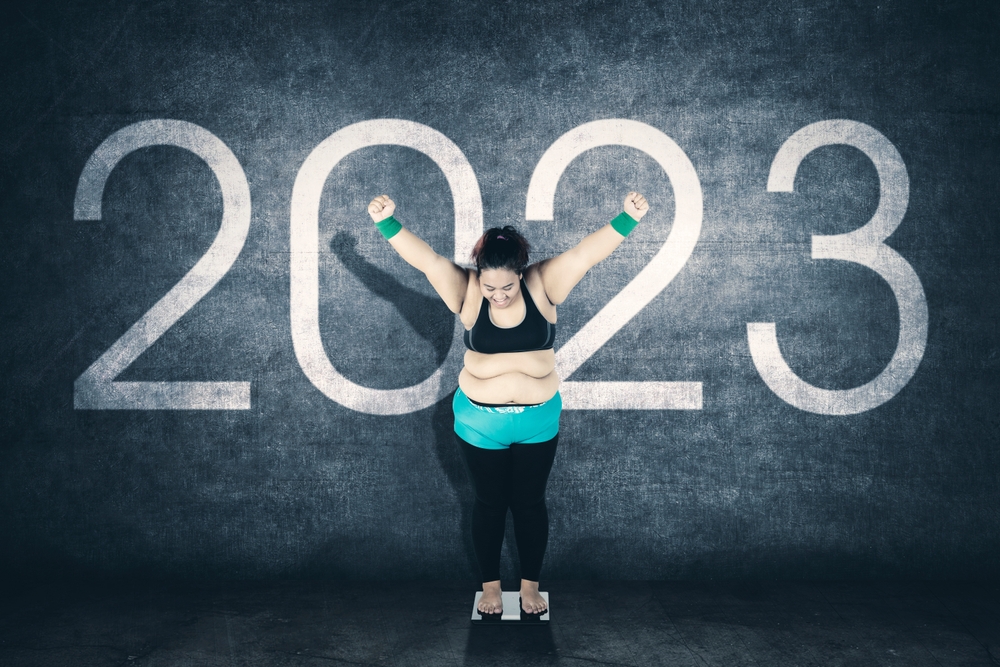
So here we are at the beginning of a new year, and probably, like most people including myself, you have set yourself ambitious and exciting health and fitness resolutions for 2023. Possibly, again like many others, you didn’t mange to stick to last years resolutions, either because you got bored, too busy with life, or maybe even injured....But this time you are determined that it will be different .
\r\n\r\n
Well if you can relate at all to the above, then I have created a short list of several sure fire ways to achieve your resolutions this year ..
\r\n\r\n
Be CLEAR ABOUT WHAT YOU ARE ACTUALLY TRYING TO ACHIEVE WITH your resolution.
\r\n\r\n
Ask yourself why this resolution is important to you, what will it allow you do to that you can’t do now? So for example , if you want to lose weight, why? for health reasons, because you have an event or outfit that you want to get in shape for ? Make sure you have a reason that is important for you and this will help you to stay motivated
\r\n\r\n
Set REALISTIC, RELEVANT, TANGIBLE , MEASURABLE, TIMED and most importantly SUSTAINABLE goals to achieve your resolutions.
\r\n\r\n
It is essential that you can break down your resolution into small , measurable, daily, weekly or monthly goals , goals that you can track and measure and that you will sustain. So for example , if your resolution is to get fitter , then decide what is going to be a realistic goal, will you increase your activity or eat more healthily or both?
\r\n\r\n
A tangible goal is one that you can actually measure and track and thus monitor progress which in turn, is motivational, so for example “my goal is to get fitter” is not tangible, measurable or trackable. A better goal would be to choose an activity that helps you to get fitter and then create a goal around that so for example “my goal is to start running for 20 mins , 3 x per week”
\r\n\r\n
Daily goals might include drinking at least a litre of water a day or ensuring you include protein at every meal, a weekly goal might be completing at least 3 x 20 min exercise sessions a week , a monthly goal might be a weight loss goal or, better still a performance related goal (at the beginning of the month it took you 30 mins to walk /run 1k and your goal is to cut this down by 10 mins.
\r\n\r\n
Remember BALANCE is key
\r\n\r\n
If you are taking extremes then you are less likely to succeed as extreme actions are less likely to be sustainable. What do I mean by extremes? A good example would be cutting out or severely reducing a food group like going on a low carb or low fat diet - firstly you should never cut out a food group. Why ? You need carbohydrates for energy, especially important if you are increasing your activity levels. Fat also provides energy but also protects your organs , keeps your cholesterol and blood pressure under control and helps your body absorb vital nutrients. Protein helps build muscle so is key if you wish to lose weight and achieve that toned or lean look, plus it is the most satiating macronutrient.
\r\n\r\n
Another example of extreme behaviour might be going from a no activity, completely sedentary lifestyle to running 5k every day or lifting heavy weights 7 days a week . As well as probably being unsustainable, unrealistic increases in activity potentially will lead to fatigue, over exercising and most importantly injuries.
\r\n\r\n
BE CONSISTENT (at least 75% - 80% of the time)
\r\n\r\n
Be consistent but not unrealistic . Accept that you cannot always be 100% consistent so aim for 75 - 80% consistency.
\r\n\r\n
If you mess up, so for example you overeat on a Friday night or you just can’t bring yourself to exercise for a day, don’t let it ruin your week. One day off, will not hurt you , but if that day turns into a couple of days , or a week then you will start to lose progress and motivation.
\r\n\r\n
Be consistent, but be kind to yourself if you slip and remember to start again.
\r\n\r\n
MAKE SURE YOU ARE GETTING ENOUGH REST and SLEEP
\r\n\r\n
Another important but often overlooked tip is to make sure you are getting enough sleep. Why is this particularly important, if you are looking to improve health, fitness and lose weight? Sleep allows your body time to recover, conserve energy, repair and build up the muscles worked during the exercise.
\r\n\r\n
The obvious consequence of poor sleep is fatigue during the day, but poor sleep especially consistently poor sleep can also lead to reduced energy and concentration levels during the day which will impact your motivation and ability to exercise or be active. In addition and maybe not so obvious, poor sleep can lead to an increase in your body’s production of cortisol, which is a stress hormone and which, if too high, can cause an increase in body fat, slow down your metabolism by affecting thyroid hormone levels and induce cravings.
\r\n\r\n
Research also suggests that sleep deprived people are more likely to be drawn to high calorie foods.
\r\n\r\n
ARRANGE EXTERNAL ACCOUNTABILITY & SURROUND YOURSELF WITH PEOPLE THAT INSPIRE YOU or SHARE YOUR GOALS
\r\n\r\n
My final tip to ensure success would be to arrange for some kind of external accountability, in order to discourage you from slacking or not being honest about your progress. Even those of us who have great self motivation, will work harder if we have somebody tracking our progress. So either hire a personal trainer, or join a group, commit to sharing your progress on social media, or simply share your goal with friends or family.
\r\n\r\n
In addition , surround yourself with people that you aspire to be like , people who will support you on your journey. My favourite fitness quote is “If you hang out with chickens, you’re going to cluck and if you hang out with eagles, you’re going to fly” . Dr Steve Maraboli Be an eagle this year.
\r\n\r\n
Good luck and do get in touch if you have any questions or need any help.
\r\n\r\n
\r\n
Could Your Core Be The Cause Of Your Back Problems *

So many clients that come to me with inexplicable aches or pains, whether they are back pain, tension headaches or even plantar fasciitis, have something in common. And that is an unstable core. Even those clients that regularly train and exercise, may have unstable cores, strong but unstable.
So what is the difference, why does it matter and how can it cause pain?
So firstly, the core is not just made up of the tummy, but actually refers to the trunk of the body. Core muscles include those that stabilise the back, hips and shoulders.
Core strength relates to the ability to produce force throughout a given movement, like a sit up.
Core stability refers to the ability to resist unwanted spine movement during physical activity.
Core strength is of course important, without it you might struggle to move your body with power and effectiveness, but stability is as important. The more stable your spine, the better your movement and your posture and a reduced likelihood of pain caused by muscular imbalances.
Core stability helps take pressure off the spine and provides a more stable base for your joints overall.
It is easy to neglect core stability training and just focus on strength. Core stability is achieved through smaller, deep muscles, muscles that are not easy to train. But if these muscles are neglected and consequently work ineffectively then our target muscles will compensate which will lead to overuse, muscular imbalance and over time will possibly result in pain and a higher risk of injury.
So core stability is essential.
With that in mind, we have decided to run a series of online mobility classes that will be focused on improving core stability and strength as well as mobility, flexibility and functional movement.
These low impact and bodyweight classes will be ideal for those suffering with muscular aches and pains from back pain to tension headaches and even those with lower limb issues like knee pain or sciatica will benefit from these classes. The simplicity of the movements mean that the classes will be accessible for most clients regardless of age or fitness levels.
The classes will also act as perfect supplement for those receiving soft tissue therapy for aches or injuries, especially if you struggle to motivate yourself to carry out the exercises recommended by your therapist.
Even if you are not suffering with a specific issue, the classes will still help with tightness and muscle stiffness that may be experienced if you are sitting at a desk for too long and not as active you feel you should be .
The classes will run as a series of 6 with each class building on the previous one, so ideally you would book the series of 6, however it is possible to book one class at a time and see how you get on.
Please do not hesitate to contact us if you would like to discuss your suitability for the classes or book in.
We hope to see you online soon.
Add Days to Your Life and Life To Your Days *

Our bodies are extraordinary and they deserve special attention .
Living longer is great, if our bodies and minds are able to make the most of that time, The good news is that physical activity has been proven to prevent and help manage more than 20 chronic conditions.
Research has shown that we can benefit from the health gains that physical activity brings at any time in our lives, so it doesn't matter where you start as long as you do start !
We’ve put together a number of FREE advice sheets covering 10 of the most common medical conditions with specific physical activity guidelines and advice for each and as a GP Referral qualified PT, I can actually provide practical PT and advice if needed.
The sheets include advice on the the following conditions:
- Type 2 Diabetes
- Depression
- Arthritis and Osteoarthritis
- Heart Disease
- COPD
Our free advice explains the benefits of being more active for your specific condition, gives advice on the type of exercises that will benefit you most and answers the most commonly asked questions relating to being more active whilst dealing with your condition . Click on the link to acces these free downloadable advice sheets and do not hesitate to call if you have any questions.
Learn not only how to live longer but also how to live stronger. Click here to access the leaflets and do get in touch if you have any specific questions .
KNEE PAIN *
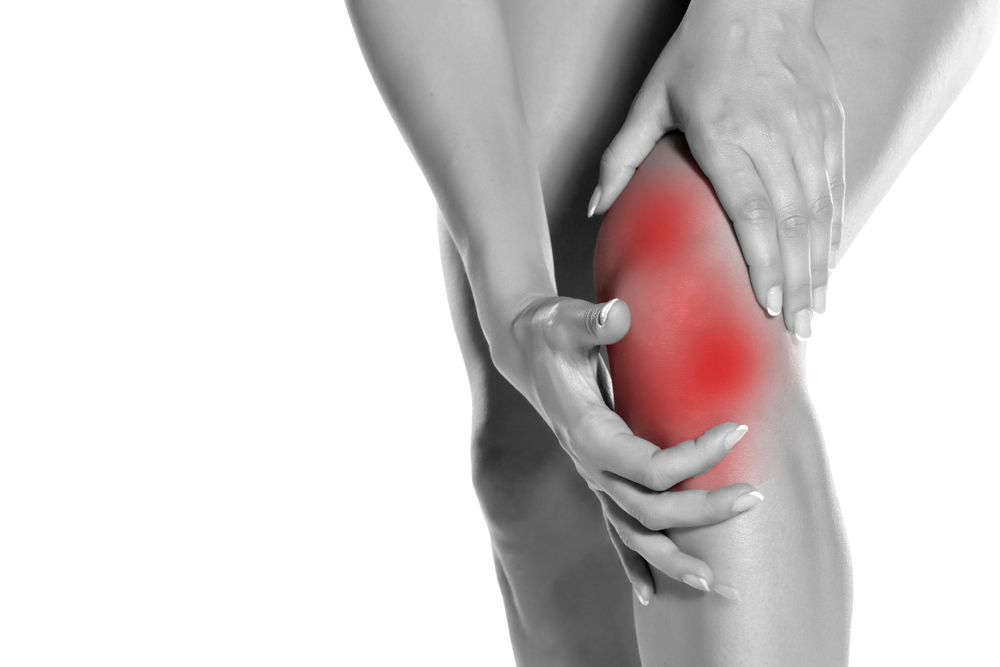
If you have every suffered with knee pain the check this out
Do you ever have pain at the front of your knee? Maybe you get pain knee pain when you run? Maybe you don’t run but you experience pain when you are going up and down the stairs, especially on the way down?
If you can relate to any of the above then you may be suffering with either one of the two most common knee conditions , Runners Knee (aka Patellofemoral Pain Syndrome) or Iliotibial Band Syndrome ( aka IT Band Syndrome)
Many people come and see me with knee pain and although often the causes are biomechanical and require physical therapy, sometimes the pain can be caused by external issues that can be easily rectified by the client.
Hopefully this article will help you identify firstly which condition you may be suffering with and what steps you can take to help resolve the problem before having to refer to an expert.
So the two common issues are Runners Knee and IT Band Syndrome. Although they are pretty similar, and sometimes the names can be interchangeable and in fact often the causes can also be similar, there are a few distinct differences:
Runners Knee, as the name suggests, tends to affect runners although it can also affect non runners such as cyclists, hikers, and those who sit for a living. Pain will occur at the front of the knee or around and behind the knee cap. It will hurt to press down on around the kneecap. As well as pain during a run, you may also experience pain when going up and especially down stairs or hills but especially when going up. You may also experience pain if you are squatting or even sitting cross legged. You might get some creaking noises when bending the knee.
Click here for more information including rehabilitation videos to help with this condition.
https://www.co-kinetic.com/media/render/5df8755ea02e2cbb5158f35c11ac8ac3/media.pdf?brandContent=tr
With Iliotibial Syndrome, the pain tends to be located on the outer side of the kneecap rather than the front of the knee. It may also travel partially up the outside of the thigh and around the entire knee, particularly in severe cases but the worst spot has to be on the side of the knee. Pain tends to be worse when going down stairs or hills rather than going up. Pain often improves with rest although it might get worse after prolonged sitting.
Click here for more information including rehabilitation videos to help with this condition.
https://www.co-kinetic.com/media/render/ea2ddb52d75acdfc5741cad60a31fc34/media.pdf?brandContent=tru
Both conditions are localised to the knee area and unlikely to refer pain elsewhere, such as up towards the groin or down towards the foot.
If you experience either of the following symptoms then it is unlikely that you are suffering with Runners Knee, or ITBS and should refer to a specialist.
- Equal pain in both knees
- Locking, clunking or instability of the knee
- Swelling
- A sudden onset of symptoms
- Throbbing pain in the back of the knee
- Tingling or numbness
As previously mentioned, sometimes the reasons can be down to biomechanical factors such as weakness around the hips, flat feet, weak ankles or a weak core. In fact if you have muscular pain elsewhere in your body there will almost certainly be a connection. These issues can absolutely be fixed but may require physical therapy or intervention whether it be strengthening , activating or releasing muscles. But sometimes the reasons are very straightforward and the client can make easy fixes which will help.
So , if you are suffering with knee pain , especially if you are a runner , whether experienced or new to the sport, then I would check the following out first and see if anything applies to you. If nothing applies or you make the changes then definitely book into see a specialist, like me, who will be help.
Activity Level
- Have you suddenly changed the intensity, frequency or duration your run or activity? Are you suddenly doing a lot of high stress exercises like lunges or plyometrics? It is possible that your muscles are just not conditioned enough for the sudden increase in activity? Maybe pare your exercise back slightly, take more rest and focus on strengthening exercises especially your core and lower body.
Training Shoes
- Are you wearing the right shoes, especially if you are a runner? If you have very high or very flat arches, this will definitely affect your knees. If for example you have flat feet then they will roll inwards on hitting the ground, and your knees will follow. If this applies to you then buying shoes off the shelf is not a great idea, Get your gait checked first.
- If you have a pair of shoes that you wear a lot, then check the wear pattern on the soles and if the wear pattern is not symmetrical then you know that something is awry.
- How long have you had your running shoes?. Remember, most shoes have a lifespan of around 300 - 500 miles.
Running Environment
- Are you running on a camber or a running track? If you always run the same route on a road then you are probably running on a camber which means that one leg will always be higher than the other. The same goes for a running track. So mix it up, change direction, change routes.
Equipment
- Do you wear media like a phone on s strap on your arm? If you do, then it is more than likely that subconsciously you will be throwing that arm out, to stop the strap from rubbing against your body, and this small movement will move your weight bearing to the opposite leg so now one leg is constantly weight bearing more than the other. This tiny affect, over a long period of time will impact your knee. The same applies if you always carry a water bottle etc in the same hand. Switch it up or better still buy a belt that allows you to place your belongings centrally in your back .
So hopefully this has helped but if you are still struggling with knee pain then please get in touch and let us help you get rid of your pain once and for all.
Running should be pain free !
Enjoy
Fitness Myths *
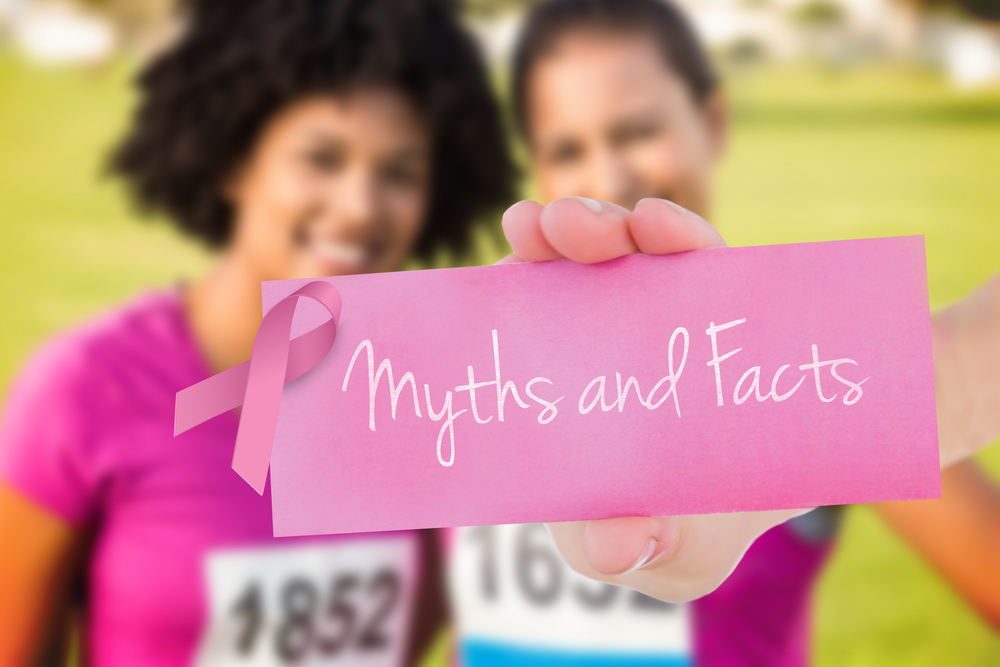
Following several conversations with clients, I thought it might be a good idea to put to bed some common but horribly misleading myths ...
1. If you lift weights you will turn into the Incredible Hulk!!!
NO.! Even male bodybuilders have to work very very hard to get that big muscly look and they benefit from testosterone, the hormone primarily responsible for building muscles. They have to lift ridiculous amounts of weight, eat lots of food and take lots of supplements. Women, with only around 1/20th the amount of testosterone as men, have to work even harder, eat loads, train frequently and probably take supplements.
TRUST ME, lifting weights alone will not turn you into incredible hulk.
2. It is possible to “tone” your muscles
This is another myth! Muscles do not get firmer or “toned”. They do not go from soft to hard or hard to soft, they either get bigger or smaller. The “toned“ look that people aspire to is a combination of the muscle getting bigger (but not Incredible Hulk big) and bodyfat dropping, thus making the muscle more visible, in other words becoming more lean.... So when you want to look lean, you need to strength train and drop body fat
3. If I want that lean look, I need to do lots of reps with light weights
Endless reps with light weights will not give you long lean muscles. If you train like this then your muscles will become good at enduring this type of training. If you are new to weight training, then you should definitely start with this type of training to build a good basic foundation of fitness, light weights and maybe around 15 reps. But if you want to get leaner and stronger then you will need to upp the weight and reduce the reps. Your muscles will only change size and grow if they are continually and progressively overloaded.
Ideally you should be choosing a weight that you can lift 8 - 12 times, and the 11th and 12th reps should be doable but hard...If you can easily do 12 reps plus more then upp the weight again
4. But women shouldn’t be lifting weights or women should train differently to men
Believe it or not, I still hear this and even if I don’t hear it, in gyms I generally see guys in the weights area and the majority of girls either in the cardio zone or on the resistance machines. Now resistance machines have their place and some machines such as the leg press are irreplaceable BUT in my opinion, if you can use free weights rather than a resistance machine you will get more value. Most of the time, when you use a resistance machine you are forced to work within the range of the machine , plus you are sitting down and so generally only using the specific muscles targeted. If you are using free weights then you have more ability to move around plus, if you are standing up you will be using your core muscles as well as the muscles targeted. Plus, it is hard to better the feeling that you get when you lift a weight that you have never lifted before ...such a feeling of empowerment ....
As for women training differently to men, of course generally men will be stronger than women but the training should be the same. If you want to improve your cardiovascular fitness do cardio...if you want to get stronger and leaner then lift weights.
5. Talking of the “core” I need to do crunches as I need to lose my belly fat ...
First of all, it is not possible to spot reduce fat ! We all have troublesome areas where fat seems to just stick around stubbornly ....the stomach, thighs and triceps are my stubborn areas.... Unfortunately when we do start to lose fat, we can’t dictate where it comes from, it could come from anywhere and in fact stomach fat is notoriously difficult to lose. The best approach therefore is to focus on losing total body fat. If you actually want to see that six pack, then your total body fat needs to be very low ( c.8% for men and 18% for women)
So body fat should be a focus and this is going to be achieved through diet as well as exercise. It is true that abs are made in the kitchen.
As for exercises, the big compound moves like squats, deadlifts, lunges, presses are the ones to go for ....not hundreds of crunches ...
6. If you spend lots of time in the gym you will get fit
This is probably the biggest and most common mistake people make ....they join a gym and then spend 3 hours each day doing back to back classes ....they might see weight loss at the beginning but any changes soon stop and they end up tired, overtrained and possibly injured too...
If you are able to do 3 classes back to back, especially if they are supposed to be hard classes, you have to question whether you are really giving 100% in each class. Secondly overtraining is actually bad for you ...if you train for long periods of time, especially at low to moderate intensity then you are actually putting your body under stress and this will result in your body releasing the fat storing hormone cortisol. Plus long periods of cardio work, sitting on the recumbent bike whilst reading the paper for example, is just going to make you hungry and it is so easy to undo all your hard work by rewarding yourself with a treat after you work out..
Exercise is about quality and not quantity and also all exercise is not the same. The most efficient way to exercise is to understand your fitness goal, make sure that the training method selected suits that goal, and then make the sessions, challenging and not too long...If you are really working hard then an hour really should be more than enough ....
Why just CARDIO is NOT ENOUGH *
.jpg)
Did you know that the best way to lose body fat, get stronger and leaner is weight training, whether using equipment or your own bodyweight?
Cardio is, of course fantastic for aerobic fitness and will help you lose weight quickly in the short term but for long term success, lifting weights and increasing your muscle mass is the way to go. Why? Because focusing on weight training will increase your muscle, more muscle means increased metabolism, increased metabolism means that you are burning more calories a day even when you are just chilling on the sofa. Research shows that 1lb of muscle burns 7 - 10 calories per day, while 1lb of fat burns only 2 - 3 calories so gaining more muscle means you will be burning more calories. (The problem with to much cardio is that the weight you lose includes muscle rather than fat so your metabolism will actually slow down) And when I talk about gaining muscle I do not mean that you will turn into Arnold Schwarzenegger. Ladies in particular, please do not need to worry about becoming bulky, firstly our lower levels of testosterone make it hard for us to get bigger, and then for both males and females, you would need to eat shed loads of food plus take lots of supplements before you would even begin to see huge muscle mass.... Trust me, bodybuilders have to do much more than simply lift weight to get bigger ....it is not easy. If you eat well and start weight training what you will get is a leaner, stronger and more toned you ....
What else does weight training do for you?
Well the health benefits include the following:
It helps build a stronger heart, reduce resting blood pressure, improves your cholesterol level and helps control blood sugar levels, all factors that relate to heart disease.
Protects your bones, increases bone density, strengthens bones and connective tissues, especially important as we get older and our bones get weaker. One of my older clients came to me with osteoporosis and she has found that weight lifting, mainly with her bodyweight but also with light dumbbells has helped stabilise her bone density, without the use of drugs!!!
Weight training also helps to improve your co-ordination, posture and balance , again really important as we get older and are more susceptible to falling
Weight training also helps keeps the weight off for good so more yoyo dieting
Best of all it improves your mood and boosts your energy levels by elevating endorphin levels AND it is empowering ...there is no better feeling than feeling strong, trust me !!
So guys, I urge you start training your muscles, not just your heart ...use your bodyweight for squats, lunges, press ups and so on or if you have acces to a gym then go pick up some weights ...
If you need a 121 on how to then give me a call as I do offer 121 technique classes....
Go lift and enjoy the results
Do You Want To Transform Your Body, Fitness & Happiness? *
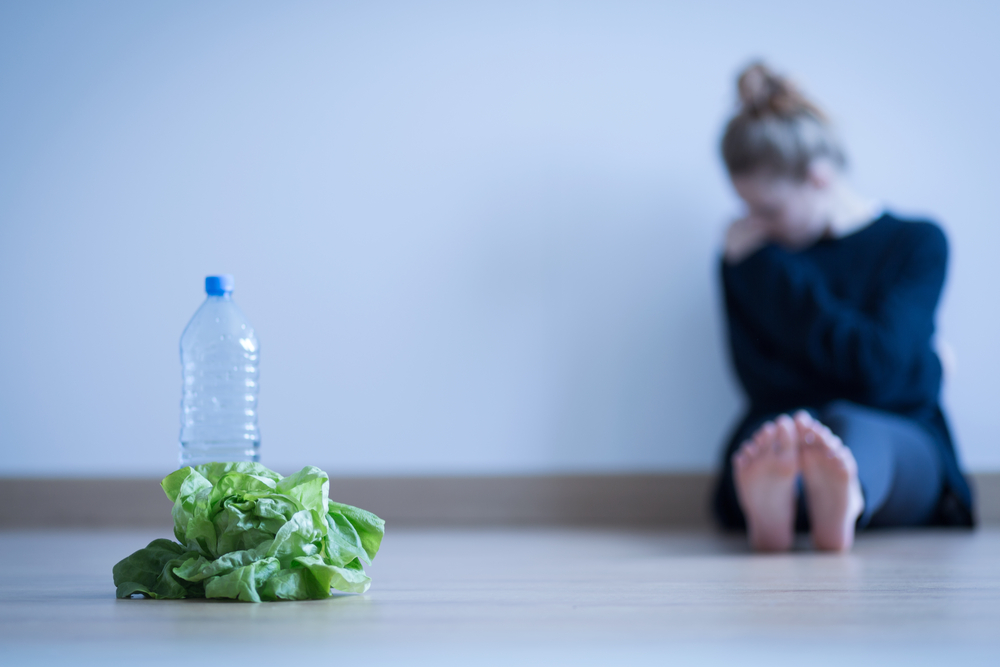
Are you unhappy with your weight?
Have you spent days, months or even years constantly trying to lose weight or keep it off?
Are you constantly yoyo- ing? feeling frustrated or unmotivated and wondering where to turn or what new diet to try?
Do you eat when you are sad or bored or is your weight caused by a hormone imbalance?
Do you find yourself secretly eating?
Do you find that you still struggle with your weight even though you eat well and you exercise?
Are you confused with all the latest advice about how we should be eating? Do you want to understand more about superfoods? What is good fat or bad fat? How much sugar is too much?
If any of this sounds familiar, then I can help
Firstly try and follow the simple rules below.
1.DON’T COUNT CALORIES, or go onto faddy or restrictive diets . If you are truly hungry EAT but eat the right foods
2. DON’T SKIP BREAKFAST but switch cereal for high protein breakfasts like bacon and eggs,
3. EAT REAL FOOD, avoid ready meals or overly processed foods, even if they are low fat or slimming meals ...Ready meals are never a good option, especially if you are trying to lose weight
4. EAT MINDFULLY , are you eating because you are hungry or are you bored or sad or eating just because ….if you know that you eat too much try and work out why. Are you an emotional eater? Could you have a hormone imbalance?
5. Reduce SUGAR and STARCHY CARBS
6. Remember that if you want to sustain your wight loss you must sustain your eating habits, so ignore faddy or restrictive diets and eat for life!
7. Be ACTIVE, exercise regularly. Start slowly but gradually increase it and make sure that you are doing the right level, intensity and type of activity for you. Not too much, and not too little..
AND THEN if you need more support with motivation, exercise or dietary advice or all three, then contact me even if all you want to do is get a little friendly advice .....
I am not only a personal trainer but a Obesity and Diabetes weight management specialist and a Nutritionist. I am also used to working with older clients and those with specific conditions that make exercising more complicated or clients who secretly eat and worry about it ...
I understand that sometimes weight issues are about more than just eating too much and not moving enough. I understand that talking, listening and understanding why the issues exist in the first place is the key to then dealing with the issues successfully once and for all.
My client, shown in the pictures struggled with her weight, tried so many faddy diets, skipped breakfast, ate when she was bored ….did all of the things that caused issues BUT with only one session a week with me plus lots of dietary advice, she went from unhealthy and unmotivated
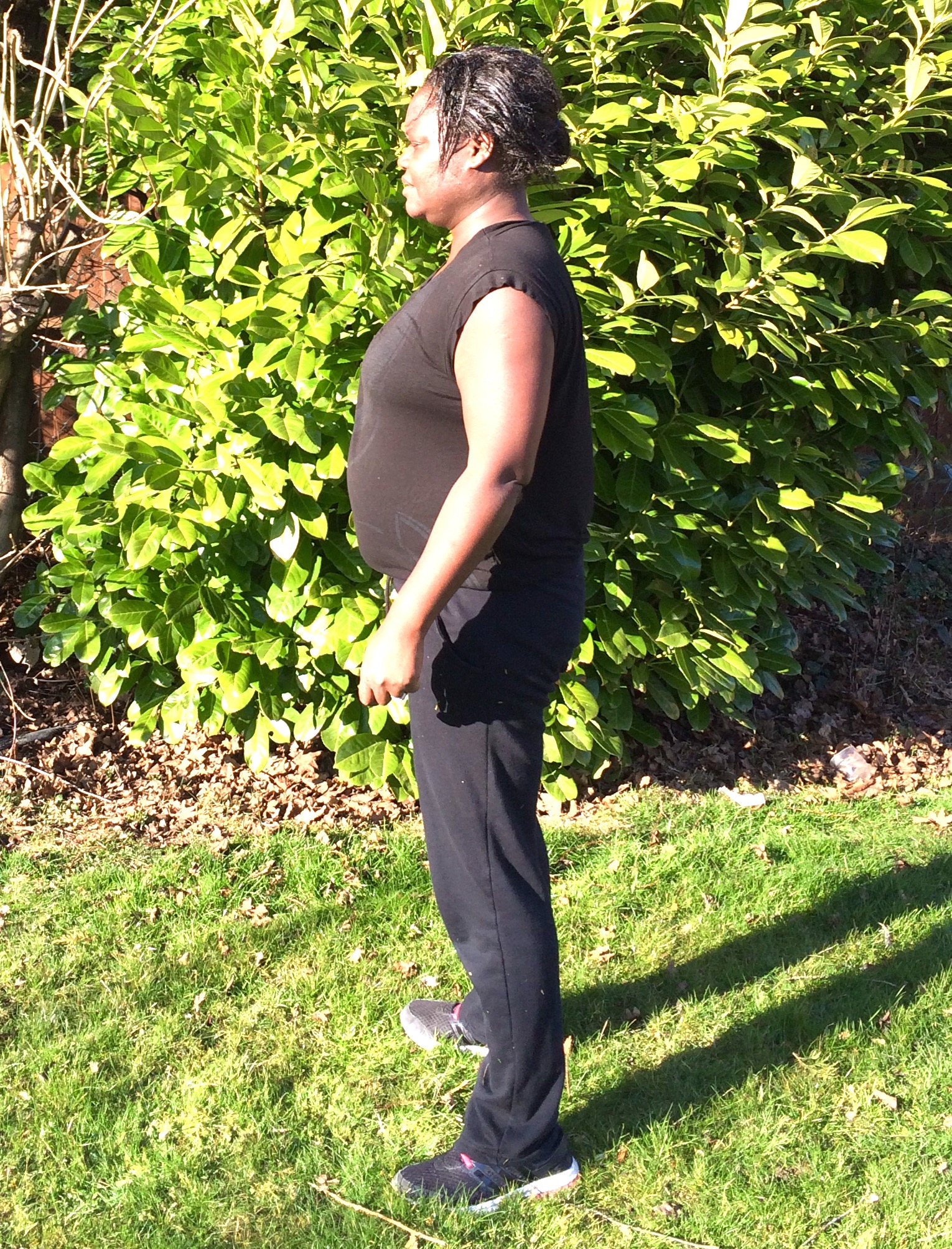
to very healthy, fit and happy!
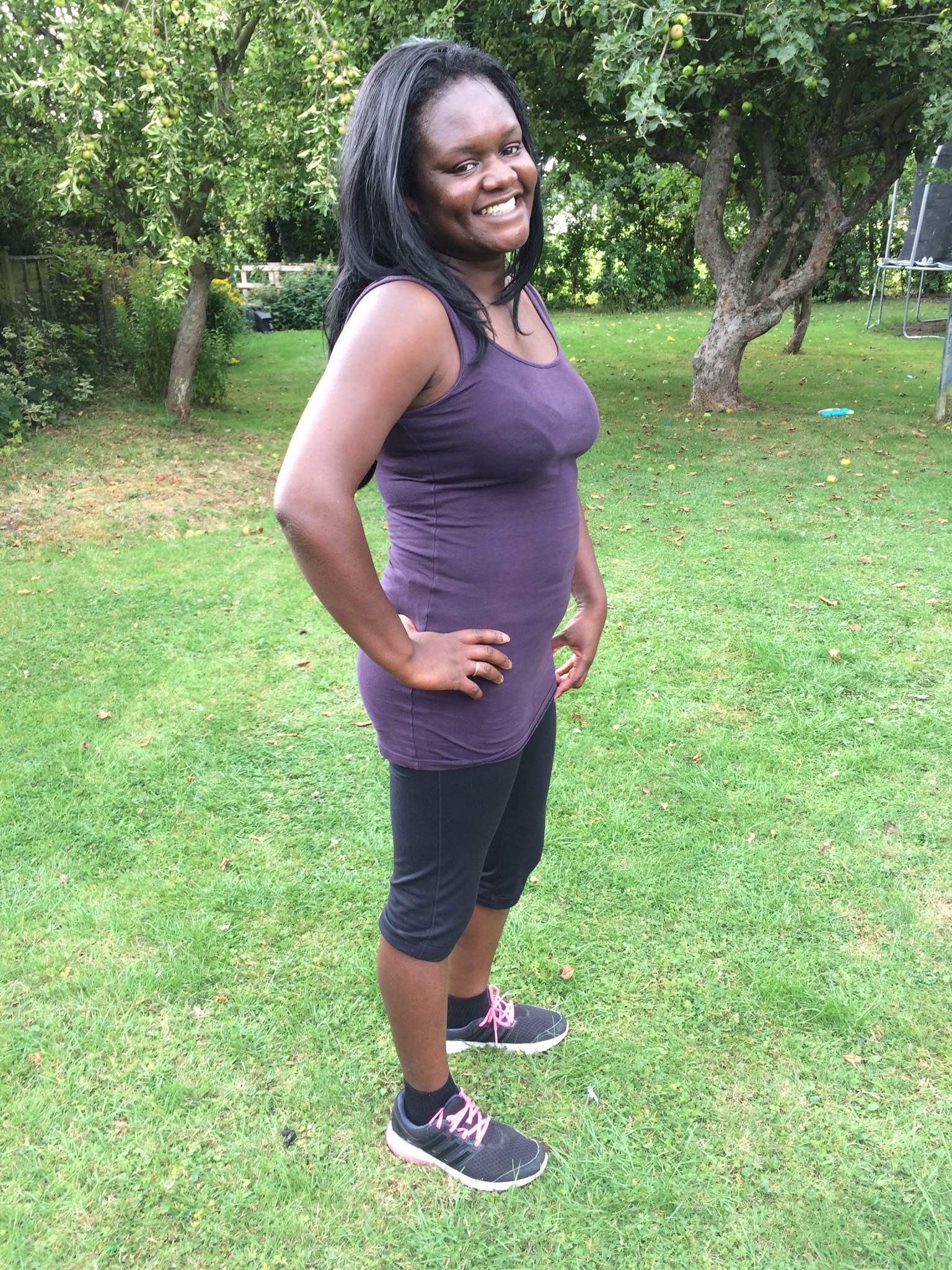
This was achieved within 6 months, with only one session a week, no faddy or expensive dieting, counting calories or boring exercise plans
If you can relate to her BEFORE photo and want to relate to her AFTER photo ….please get in touch and let’s sit down and discuss your issues and how we can fix them
Let me help you to achieve your dreams ...what do you have to lose?
Nikki
I'm always exercising and I eat healthily, so why am I still not losing weight? *
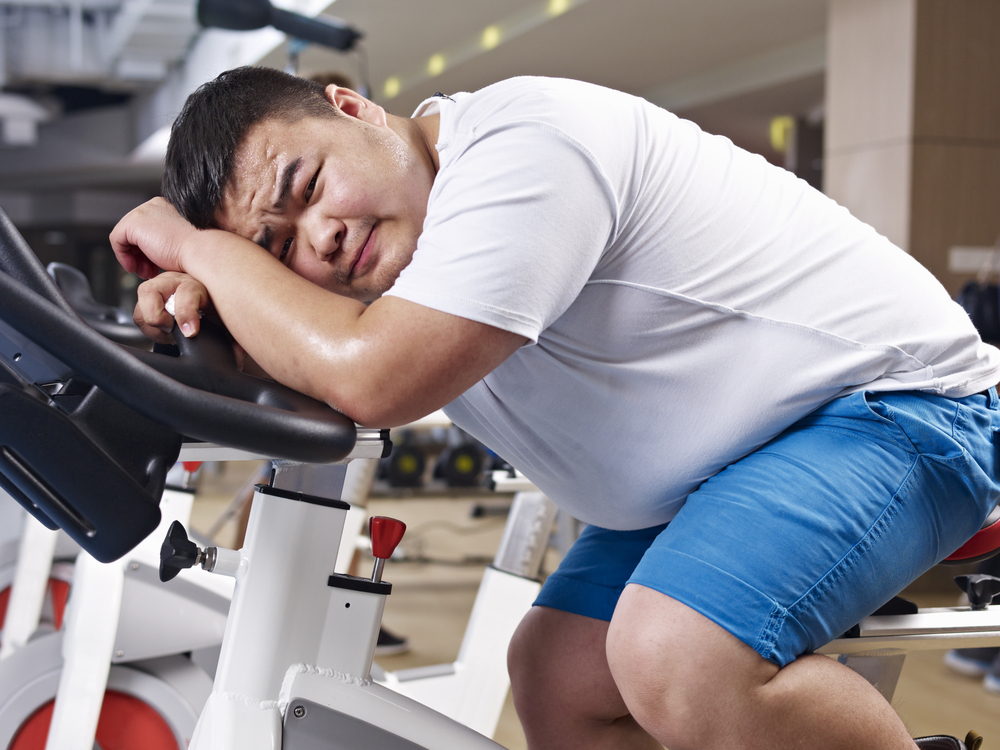
Can you relate?
I know several people, who always seem to be in the gym, hour after hour, but they still complain about not losing weight. On top of this they are constantly injured and constantly tired.
Does this sound like you? If yes, then read on for a few ideas that may get you the results you are striving for.
Firstly, I know it sounds harsh but you might not actually be working hard enough. I am certain that some people believe that actually just stepping into the gym alone , and chatting to their mates whilst walking on the treadmill, will get them fit!
Even if you actually do work up a sweat, you need to be sure that you are working at the right intensity, particularly if your goal is weight loss. Your workouts should be intensity rather than time led. The harder and more intense the workout , the shorter your workout needs to be.
On the other hand, you may be working too hard and not giving your body time to recover. Overtraining is as bad as under training! Firstly if you are able to spend hour after hour in the gym, doing consecutive classes, maybe you should ask yourself if you are actually really pushing yourself to your limits. But if you are truly working hard and then not allowing yourself to recover then you are stressing your body. Too much stress, can lead to excessive levels of the stress hormone, cortisol. Too much cortisol will promote weight gain.
Another factor that may impact your success could be the content of your workout session. That may need tweaking. Are you doing enough resistance work? Cardio is important as it boosts your metabolism and keeps your heart healthy but too much cardio may increase your appetite, reduce your muscle mass and cause your body to become endurance focused thus storing energy as fat to ensure fuel in reserve, to keep you going. Resistance or strength training will increase your muscle mass, and the more muscle you have the more fat you will burn! Resistance training is a phenomenal way to burn fat!
If you are 100% convinced that your workouts are spot on then perhaps you should look at your diet.
You have probably heard the phrase “ you can’t out exercise a poor diet” and experts generally agree that weight loss 75% diet and 25% exercise. Think about how much easier it is to cut calories than burn them off, for example a 30 minute jog might burn c.350 calories but if you ditch the can of coke and bag of crisps that you might have alongside your sandwich at lunch time, and then the chocolate bar with your coffee later in the day, that will save you over 500cals. Exercise is a key component but the right diet is essential for successful and, more importantly, healthy weight loss.
Are you eating too much? You need to burn more calories than you consume so if you are working out hard but then indulging in poor quality fattening foods then you are just undoing all of your hard work and as already mentioned, a too long cardio session may leave you famished and tired, ideal conditions for you to reach for a not so healthy treat.
On the other hand if you are not eating enough this will actually cause weight loss to slow right down as your body will start to protect the stores of energy or fat that have accumulated and it turns to your lean muscle as its calorie source. This leads to loss of muscle mass which lowers the metabolic rate so that the body needs fewer calories to keep functioning.
Finally are you eating the right foods? Avoiding sugar and processed foods? A good rule of thumb is, if you don’t recognise the ingredients on the packet, you probably shouldn't be eating it. With regard to starchy carbs, expert opinion ranges from carbs are essential to avoid them like the plague. I personally think that everybody should, to a large extent eat a diet that they enjoy and that they can sustain without feeling completely deprived. Obviously, if you are trying to lose weight then you should really choose quality, high fibre, slow release carbs. In addition try and save your carbs for your hard training days, as opposed to your rest days .
If you are working out right and eating right, then your results will come. It may not happen immediately but it will happen eventually just keep doing the right things. Trust the process .
Good luck
I'm New To the Gym. What Should I Be Doing? *
.jpg)
I’M NEW TO THE GYM. WHAT SHOULD I BE DOING?
Does that question ring true with you?
So many people understand about the benefits of resistance training as well as or instead of cardio and yet many people tell me that when they go to the gym they find it so much easier to jump onto a piece of cardio equipment as they find the weights area or the “testosterone zone” as I like to call it, scary and intimidating. Generally this is because they haven’t a clue about what they should be doing. If they have been lucky (?) they may have had a gym induction and if this has happened they probably were just shown a few fixed resistance machines and almost always the seated adductor and abductor machine (and what is that all about???)
and no free weight exercises, bar maybe bicep curls. Does this sound familiar?
If you want to start benefitting from a resistance programme but haven’t a clue about what you should be doing or you just have a limited amount of time so only want to focus on key exercises, then I would always recommend starting with basic FUNCTIONAL training.
Functional exercises are simply full body movements that replicate daily life activities. They focus on building a body that is able to carry out real life actions as opposed to a body that is able to lift heavy weights in an idealised posture created by a gym machine. So for example think of a bent over row where when you are leaning over a bench. This exercise will strengthen your back, but will also activate your core, arms and shoulder stabiliser muscles and can be likened to a carpenter sawing wood or a nurse leaning over a bed to move a patient. So compare this with the seated abductor or adductor. Now I cannot think of a daily activity that might require these movements but maybe somebody can help me with that….
The key functional movements are Squats, Lunges, Push, Pull and Hip Hinge.
So if you need a quick and simple routine then use one that incorporates all of the above movements. An example routine could be as follows:
Squats
Walking Lunges
Press Ups
Bent Over dumbbell rows
Deadlifts
I would always recommend that you start with bodyweight or very light weights to begin with and once you have mastered the technique you can begin to add resistance, weights or instability by use of dumbbells, resistance bands or stability balls. I would also suggest that you should be standing rather than sitting down when you are lifting to ensure that you are constantly using your core muscles.
The benefits of functional training include improved balance, posture, co-ordination and increased functional strength and ease with every day activities. If you are new to exercise, require rehabilitation or struggle with mobility and flexibility generally then functional training is definitely a must. Also most exercises are simple, require little if no equipment and so will hopefully allow you to start spending more time in the “testosterone zone” because you know what you are doing. Who knows, it may end up becoming your favourite place to train.
So, go functional, keep it simple and focus on your form.
Have a look at my video for your squatting and lunging technique and a simple routine and keep watching for more videos and tips.
5 Good Reasons To Exercise *

1. It makes us feel good. When we exercise our bodies release endorphins which trigger a positive feeling in the body similar to morphine. This feeling is often described as euphoric.
2. It keeps our bodies fit and able. Studies show that exercise can reduce the risk of major illnesses such as heart disease, diabetes and some cancers by up to 50%
3. It promotes better sleep. Exercise helps us fall asleep faster and deepens our sleep.
4. It improves self-confidence. Physical fitness can boost self esteem and improve ones' self image. Regardless of your weight, age or gender, physical activity can elevate your perception of your own attractiveness.
5. It increases longevity. Studies show that just 15 minutes of exercise a day increases life expectancy by three years.
The word exercise can conjure up some daunting images but exercising doesn't have to involve sweating away in a gym, dressed in tight lycra, unless of course you actually like that. Exercising can be any physical activity that elevates your heart rate and that you enjoy. Dancing, hiking, walking the dog, playing with your family , cycling, yoga, gardening, all of these actvities and more.
And you might genuinely believe that you have no time to exercise, but is this really the case or is it that you just don't prioritise exercise? If you have time to sit in front of the TV or computer, socialise with your friends, lie in on the weekends, well maybe you do have time. Furthermore, studies show that walking briskly for just 15 minutes a day will start to decrease your chances of having a heart attack, stroke or dying prematurely. Just 15 minutes!
So, is there a reason not to give it a go?
Disclaimer:
* The material on this website is provided for educational purposes only. We cannot guarantee any weight loss or fitness results.